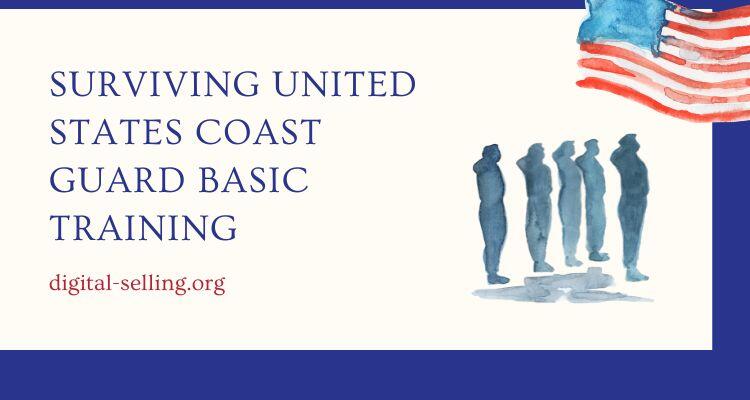This article is a comprehensive guide about the United States coast guard basic training and the skills and knowledge to survive.
United States Coast Guard Basic Training is a rigorous program with the goal to transform civilians into capable Coast Guardsmen and women. It’s a demanding process that tests both physical endurance and mental fortitude. Surviving Coast Guard Basic Training requires preparation, determination, and adaptability. In this guide, we’ll delve into the key aspects of the training program and provide insights into what it takes to thrive in this challenging environment.
Understanding Coast Guard Basic Training
Coast Guard Basic Training, also known as “boot camp,” is conducted at the Coast Guard Training Center in Cape May, New Jersey. The program lasts approximately eight weeks and encompasses a wide range of training modules. These include physical fitness, seamanship, firefighting, and leadership development.
One of the fundamental principles of Coast Guard Basic Training is the emphasis on teamwork and discipline. Trainees need to work together cohesively to accomplish tasks and overcome obstacles. Additionally, attention to detail and adherence to protocols are paramount, as the Coast Guard operates in high-stakes environments where precision can mean the difference between success and failure.
Physical Fitness
Physical fitness is a cornerstone of Coast Guard Basic Training. Trainees undergo intense physical conditioning to ensure they are ready for the rigors of service. Daily workouts typically include running, calisthenics, and strength training exercises.
To survive Coast Guard Basic Training, individuals should arrive with a baseline level of physical fitness. Engaging in regular exercise and cardiovascular activities prior to attending boot camp can help build endurance and stamina. Additionally, maintaining a healthy diet and staying hydrated are essential for sustaining energy levels during demanding training sessions.
Seamanship Skills
Another critical aspect of Coast Guard Basic Training is seamanship. Trainees learn essential maritime skills, including navigation, knot tying, and boat handling. They also receive instruction on maritime law enforcement procedures and search and rescue techniques.
To excel in seamanship training, individuals should familiarize themselves with basic nautical terminology and concepts before arriving at boot camp. Additionally, practicing knot tying and studying navigation charts can provide a valuable head start. Developing a comfort level on the water and maintaining situational awareness are also essential for success in seamanship exercises.
Firefighting and Emergency Response
The Coast Guard is often called upon to respond to maritime emergencies, including fires and hazardous material spills. As such, firefighting and emergency response training are integral components of Coast Guard Basic Training.
Trainees receive instruction on fire prevention, fire suppression techniques, and damage control procedures. In addition, they learn how to respond to medical emergencies and administer basic first aid.
Surviving Coast Guard Basic Training requires individuals to remain calm under pressure and follow protocols meticulously during emergency situations. Developing effective communication skills and the ability to work as part of a team are critical for ensuring successful outcomes during simulated emergencies.
Leadership Development
Leadership skills are cultivated throughout Coast Guard Basic Training, as trainees are groomed to assume positions of responsibility within the organization. Through classroom instruction and practical exercises, individuals learn the principles of effective leadership, including decision-making, communication, and conflict resolution.
To thrive in the leadership component of Coast Guard Basic Training, individuals should demonstrate initiative, accountability, and a willingness to learn from both successes and failures. Building rapport with peers and earning the trust and respect of instructors are also important factors in developing leadership potential.
Conclusion
United States Coast Guard Basic Training is a demanding but rewarding experience that prepares individuals for service in one of the nation’s premier maritime security organizations. Surviving Coast Guard Basic Training requires mental resilience, physical preparedness, and a commitment to excellence. By focusing on physical fitness, seamanship skills, firefighting and emergency response, and leadership development, individuals can maximize their chances of success in this challenging environment.
If you believe you are made of the right stuff to join the US Coast Guard and want to know more, click on the button below.
